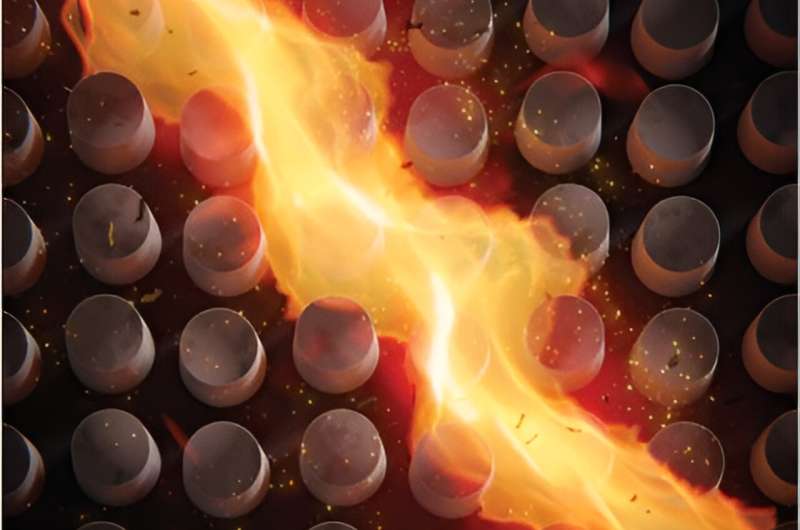This article has been reviewed according to Science X's editorial process and policies. Editors have highlighted the following attributes while ensuring the content's credibility:
fact-checked
peer-reviewed publication
trusted source
proofread
Focusing micromechanical polaritons in topologically nontrivial hyperbolic metasurfaces

Dr. Johan Christensen, leader of IMDEA Materials Institute's Mechanical and Acoustic Metamaterials research group, is among the researchers behind a pioneering study exploring the topological properties of metamaterials.
This latest research, titled "Focusing micromechanical polaritons in topologically nontrivial hyperbolic metasurfaces" and published in Advanced Materials, has captured significant attention due to its potential to revolutionize wave manipulation through non-trivial and defect-immune characteristics inherent in topological metamaterials. The study was featured on the journal's cover.
Topological metamaterials are distinguished by their topological protection of surface states, setting them apart from conventional materials. In the realms of acoustics and elasticity, these surface states manifest as localized vibrations at the interface between the metamaterial and its environment.
Unlike typical sound waves that propagate through the material's bulk, these surface states are extraordinarily robust, maintaining their properties even amid minor variations or imperfections in the material.
Dr. Christensen and his team have made a remarkable advancement by structuring the surfaces of elastic metamaterials with micrometer-sized pillars.
"This meticulous patterning that we have been able to achieve in this latest work, incorporates specific symmetries designed to enhance the metamaterials' performance," explained Dr. Christensen.
"Notably, we were able to utilize both chiral and mirror symmetries to bolster the robustness of the topological states."
Chiral symmetry, characterized by the property of objects or molecules that cannot be superimposed onto their mirror image, and mirror symmetry, where objects appear identical to their reflections, were both integral to the design.
"The precise arrangement of the pillars ensured the presence of these symmetries, significantly enhancing the nature and resilience of the topological states," added Dr. Christensen.
Alongside Dr. Christensen, the researchers involved in the latest publication include Dr. Liyang Zheng from the Carlos III University in Madrid and Prof. Minghui Lu from Nanjing University, China.
The research demonstrated the capability to focus highly directed ultrasound at low MHz therapeutic frequencies. This breakthrough, facilitated by the combination of chiral and mirror symmetry, achieved highly resilient performance and robustness against fabrication imperfections and disorder.
More information: Jiang‐Po Zheng et al, Focusing Micromechanical Polaritons in Topologically Nontrivial Hyperbolic Metasurfaces, Advanced Materials (2024). DOI: 10.1002/adma.202311599
Journal information: Advanced Materials
Provided by IMDEA Materials





















